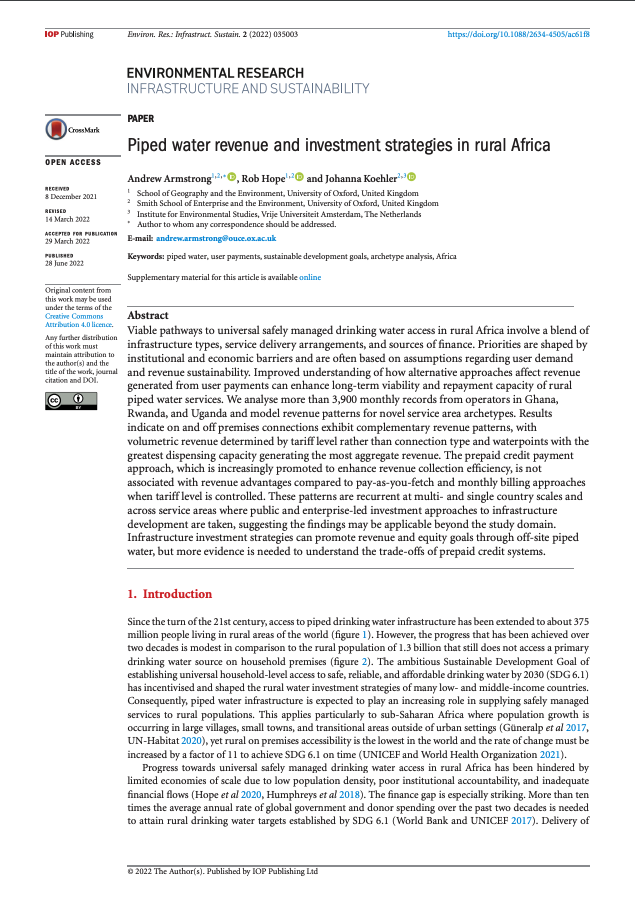Authors: Andrew Armstrong, Rob Hope, & Johanna Koehler
Viable pathways to universal safely managed drinking water access in rural Africa involve a blend of infrastructure types, service delivery arrangements, and sources of finance. Priorities are shaped by institutional and economic barriers and are often based on assumptions regarding user demand and revenue sustainability. Improved understanding of how alternative approaches affect revenue generated from user payments can enhance long-term viability and repayment capacity of rural piped water services. We analyse more than 3,900 monthly records from operators in Ghana, Rwanda, and Uganda and model revenue patterns for novel service area archetypes. Results indicate on and off premises connections exhibit complementary revenue patterns, with volumetric revenue determined by tariff level rather than connection type and waterpoints with the greatest dispensing capacity generating the most aggregate revenue. The prepaid credit payment approach, which is increasingly promoted to enhance revenue collection efficiency, is not associated with revenue advantages compared to pay-as-you-fetch and monthly billing approaches when tariff level is controlled. These patterns are recurrent at multi- and single country scales and across service areas where public and enterprise-led investment approaches to infrastructure development are taken, suggesting the findings may be applicable beyond the study domain. Infrastructure investment strategies can promote revenue and equity goals through off-site piped water, but more evidence is needed to understand the trade-offs of prepaid credit systems.

